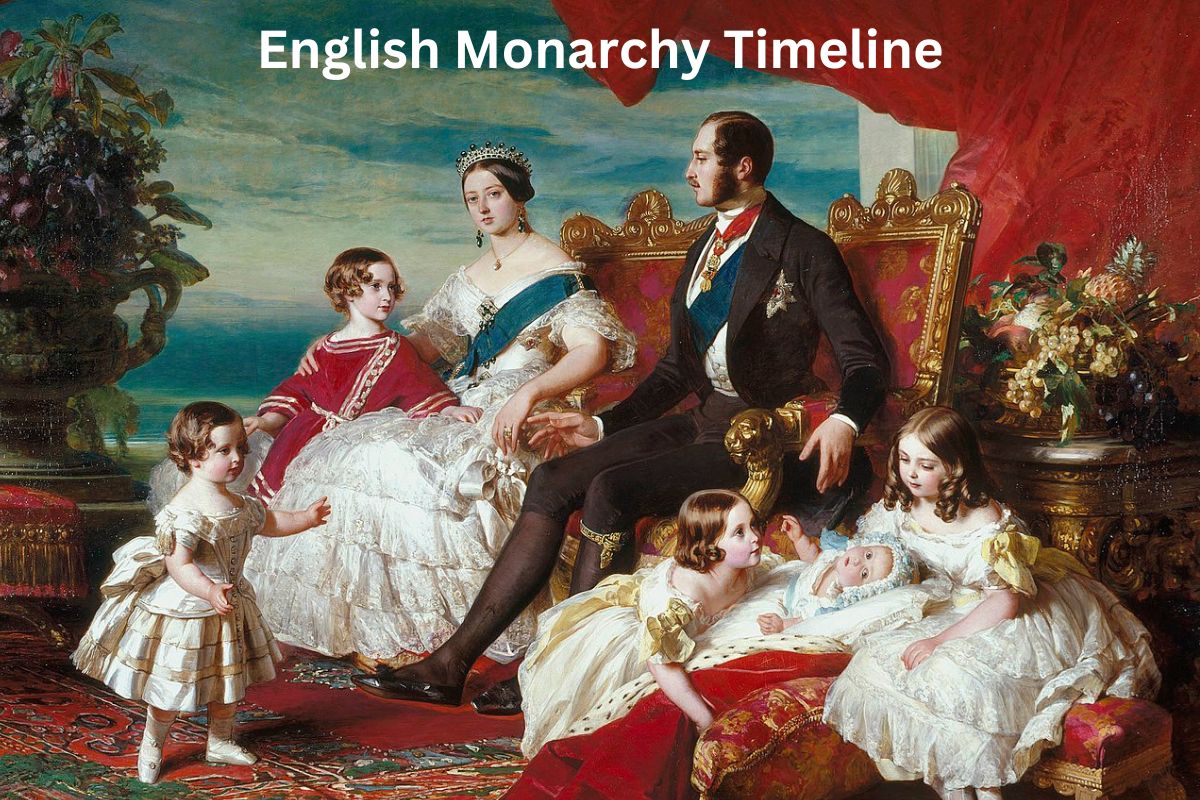The English monarchy holds a rich and storied history that spans over a millennium, encompassing a diverse range of rulers, political developments, and cultural shifts.
Rooted in the early medieval period, the monarchy has evolved from a collection of regional kingdoms into a centralized institution that has played a pivotal role in shaping England’s identity and global influence.
From the legendary Alfred the Great to the present-day Queen Elizabeth II, English monarchs have left an indelible mark on the nation’s governance, culture, and traditions.
Throughout the centuries, the monarchy has navigated through wars, religious conflicts, societal changes, and constitutional transformations, adapting to the needs and aspirations of a changing society.
This journey through time reveals not only the evolution of the monarchy itself but also the broader narratives of power, authority, and the relationship between rulers and their subjects.
Timeline of Kings and Queens of England
King Alfred the Great (871-899)
Alfred was a king of Wessex who successfully defended his kingdom against Viking invasions and laid the foundation for the English monarchy. He is known for his efforts to promote education and culture.
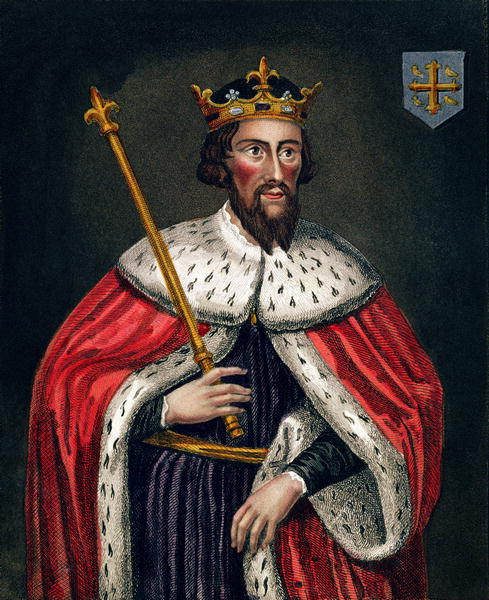
King Edward the Elder (899-924)
Edward, Alfred’s son, continued the fight against Viking incursions and expanded the kingdom’s borders. He strengthened royal authority and established a network of fortified towns.
Also Read: British Empire Timeline
King Æthelstan (924-939)
Æthelstan, Edward’s son, is often considered the first king of all England. He consolidated his rule over Anglo-Saxon territories and established a centralized legal system. He also maintained diplomatic ties with other European rulers.
King Edmund I (940-946)
Edmund, son of Edward the Elder, ruled during a period of relative stability. He upheld his father’s policies and worked to strengthen royal authority, but his reign was cut short by his untimely death.
Also Read: English History Timeline
King Eadred (955-959)
Eadred succeeded his brother Edmund I and faced challenges from Viking raiders. Despite these difficulties, he managed to maintain control over his realm and exert royal influence over various regions.
King Eadwig (959-975)
Eadwig’s short reign was marked by conflicts with the church and aristocracy. His disputes with Archbishop Dunstan reflected tensions between secular and ecclesiastical powers.
King Edgar the Peaceful (959-975)
Edgar, Eadwig’s younger brother, inherited the throne and enjoyed a more peaceful rule. He continued to strengthen the monarchy’s central authority and maintained strong relations with the church.
King Edward the Martyr (975-978)
Edward, son of Edgar, became king after the murder of his stepmother’s husband. His reign was marred by political intrigue and power struggles, and he was assassinated at a young age.
King Æthelred the Unready (978-1013)
Æthelred, son of Edgar, faced numerous challenges during his reign, including Viking invasions. Despite his efforts to pay tribute to the Vikings (the “Danegeld”), his rule was characterized by instability.
Sweyn Forkbeard (1013-1014)
Sweyn, a Viking leader, conquered England and briefly ruled after defeating Æthelred. His rule was short-lived, as he died the following year, leading to Æthelred’s return to power.

King Æthelred the Unready (1014-1016)
Following Sweyn’s death, Æthelred was restored to the throne. His rule continued to face Viking threats, leading to the eventual rise of Cnut the Great.
King Cnut the Great (1016-1035)
Cnut, a Danish king, consolidated his rule over England, Denmark, Norway, and parts of Sweden. He established a strong and stable monarchy, balancing Anglo-Saxon and Viking traditions.
King Harold I Harefoot (1035-1040)
After Cnut’s death, Harold, Cnut’s son, took the throne. His rule was marked by power struggles with his half-brother Harthacanute and disputes over succession.
King Harthacanute (1040-1042)
Harthacanute, another of Cnut’s sons, succeeded Harold. His rule was short and characterized by conflict and a heavy-handed approach to governance.
King Edward the Confessor (1042-1066)
Edward, son of Æthelred the Unready, returned from exile to become king. His reign was relatively peaceful but marked by uncertainty over succession, ultimately leading to the Norman Conquest.
King Harold II (1066)
Following Edward’s death, Harold Godwinson was crowned king. He faced challenges from both William the Conqueror (Duke of Normandy) and Harald Hardrada (Norwegian king).
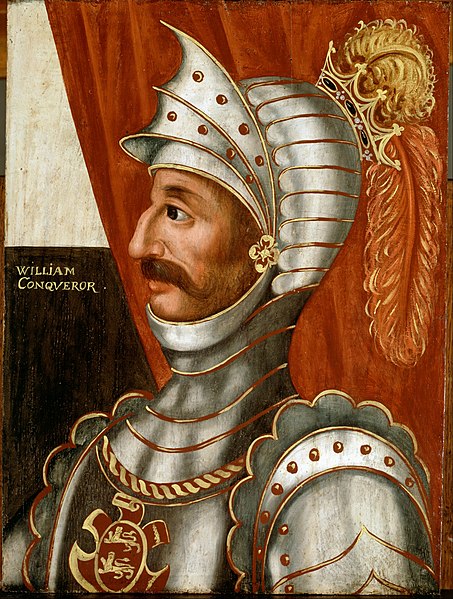
William the Conqueror (1066-1087)
William invaded England and defeated Harold at the Battle of Hastings, establishing Norman rule. His reign led to significant changes in governance, law, and land ownership.
William II (1087-1100)
William the Conqueror’s son, known as William Rufus, succeeded him. His rule was marked by conflicts with the church and nobility, and he died under mysterious circumstances.
Henry I (1100-1135)
Henry, another son of William the Conqueror, sought to consolidate royal power and implement legal reforms. His reign included the signing of the Charter of Liberties, a precursor to the Magna Carta.
King Stephen (1135-1154)
Henry I’s death led to a succession crisis, with Stephen and Empress Matilda vying for the throne. Their rivalry sparked a period of civil war known as the Anarchy, marked by political unrest and chaos.
Henry II (1154-1189)
Henry II, from the Angevin dynasty, expanded royal authority through legal reforms and the establishment of a centralized legal system. His conflicts with Thomas Becket, Archbishop of Canterbury, led to his excommunication and eventual reconciliation.
Richard I (1189-1199)
Known as Richard the Lionheart, he spent much of his reign abroad, participating in the Crusades. His absence and ransom payments strained the kingdom’s resources, and he was succeeded by his brother.
John (1199-1216)
John’s reign was marked by conflicts with nobles over taxes and his heavy-handed rule. He faced opposition from barons, leading to the signing of the Magna Carta in 1215, which limited the king’s power.
Henry III (1216-1272)
Henry III’s long reign was characterized by political struggles and conflicts. His reliance on foreign advisors and efforts to expand royal authority led to tensions with the barons.
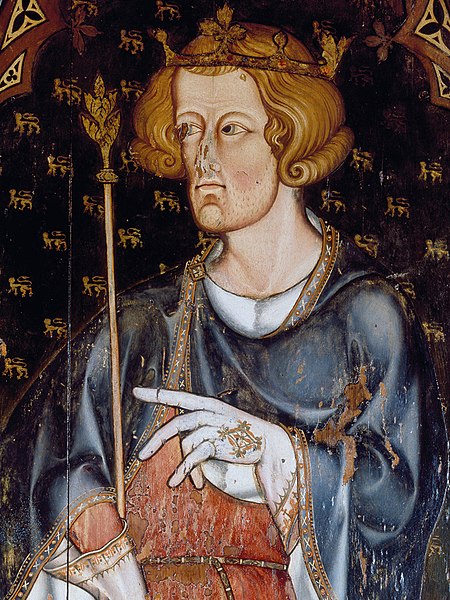
Edward I (1272-1307)
Edward I, often called “Longshanks,” sought to strengthen royal control over Wales and Scotland. He established English dominance in Wales and attempted to subdue Scotland, leading to wars and conflicts.
Edward II (1307-1327)
Edward II’s rule was marked by his close relationships with favorites and nobles, causing resentment and political instability. His eventual deposition and death reflected the discontent within the kingdom.
Edward III (1327-1377)
Edward III’s reign marked the beginning of the Hundred Years’ War with France. His victories at the Battles of Crécy and Poitiers strengthened his reputation and expanded English territories in France.
Richard II (1377-1399)
Richard II’s rule faced challenges from aristocratic factions and peasants. His young age at ascension and autocratic tendencies led to unrest, and his deposition paved the way for the War of the Roses.
Henry IV (1399-1413)
Henry IV, the first monarch of the Lancastrian dynasty, deposed Richard II. His reign saw rebellions and attempts to stabilize the kingdom’s finances and governance.
Henry V (1413-1422)
Henry V continued the Hundred Years’ War, achieving victory at the Battle of Agincourt. His brief reign was marked by military successes and efforts to consolidate English control in France.
Henry VI (1422-1461, 1470-1471)
Henry VI’s reign was marked by the Wars of the Roses, a series of conflicts between the houses of Lancaster and York. His instability and incapacity to rule effectively contributed to the Yorkist challenge and his temporary deposition.
Edward IV (1461-1470, 1471-1483)
Edward IV’s reign saw the Yorkists triumph over the Lancastrians, temporarily ending the Wars of the Roses. His efforts to stabilize the kingdom included economic reforms and enforcing royal authority.
Edward V (1483)
Edward IV’s young son became king, but his reign was short-lived due to a power struggle between his uncle Richard, Duke of Gloucester, and supporters of the Woodville family. Richard III emerged as king.
Richard III (1483-1485)
Richard III’s reign was marked by controversy, with allegations of his involvement in the disappearance of the Princes in the Tower. His death at the Battle of Bosworth ended the Plantagenet dynasty and marked the beginning of the Tudor era.
Henry VII (1485-1509)
Henry VII, founder of the Tudor dynasty, brought an end to the Wars of the Roses by defeating Richard III at Bosworth. He married Elizabeth of York, uniting the rival houses. His rule aimed at restoring stability through prudent financial management and diplomatic alliances.
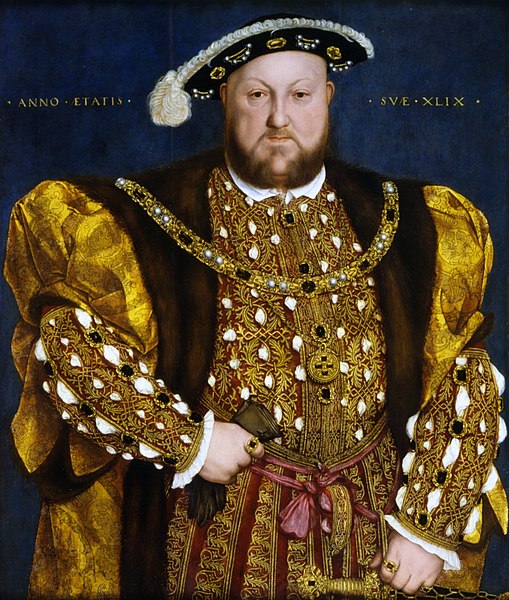
Henry VIII (1509-1547)
Henry VIII’s reign had a profound impact on England’s history. He separated from the Roman Catholic Church to establish the Church of England, primarily due to his desire to annul his marriage to Catherine of Aragon. His six marriages and the dissolution of monasteries transformed English society.
Edward VI (1547-1553)
Edward VI, Henry VIII’s son, became king at a young age under the regency of Edward Seymour. His reign was marked by religious reforms favoring Protestantism, although his early death prevented a lasting impact.
Lady Jane Grey (1553)
After Edward VI’s death, Lady Jane Grey was briefly proclaimed queen due to her Protestant beliefs. However, her reign lasted only nine days before Mary I, Edward’s half-sister, claimed the throne.
Mary I (1553-1558)
Mary I, also known as “Bloody Mary,” attempted to restore Catholicism in England, leading to the persecution of Protestant dissenters. Her marriage to Philip II of Spain aimed to strengthen her Catholic ties.
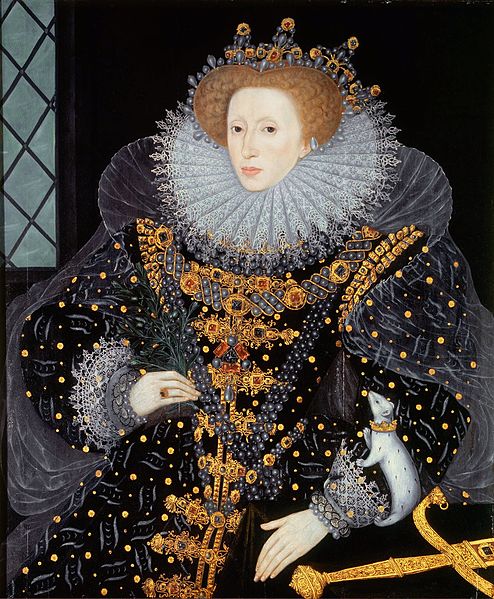
Elizabeth I (1558-1603)
Elizabeth I’s reign is often considered a golden age for England. She established religious stability by creating the Elizabethan Religious Settlement, maintained a strong naval presence, and encouraged exploration and culture, with playwrights like William Shakespeare flourishing.
James I (1603-1625)
James I of England (James VI of Scotland) was the first monarch of the Stuart dynasty. His reign saw the union of England and Scotland under one ruler, while his views on royal authority clashed with Parliament’s ideas.
Charles I (1625-1649)
Charles I’s reign was marked by conflicts with Parliament over finances and religious matters. These tensions escalated into the English Civil War between Royalists (Cavaliers) and Parliamentarians (Roundheads).
Interregnum (1649-1660)
Following Charles I’s execution, England experienced a period of republican rule under Oliver Cromwell’s Protectorate. The monarchy was abolished, and Cromwell ruled as Lord Protector.
Charles II (1660-1685)
The Restoration brought Charles II back to the throne. His reign emphasized a more relaxed atmosphere after the strictures of the Commonwealth. The Plague and the Great Fire of London were notable events during this period.
James II (1685-1688)
James II’s reign reignited tensions between Catholicism and Protestantism. His Catholic policies led to opposition and the Glorious Revolution, which saw his daughter Mary II and her husband William of Orange invited to rule jointly.
William III and Mary II (1689-1702)
William III and Mary II’s joint rule followed the Glorious Revolution. The Bill of Rights established their constitutional monarchy, limiting royal power and solidifying Protestant succession.
Anne (1702-1714)
Anne’s reign saw the Act of Union 1707, uniting England and Scotland as Great Britain. Her rule was marked by political rivalries and the War of the Spanish Succession.
George I (1714-1727)
George I, a German prince, became king due to his Protestant lineage. His reign continued the Hanoverian dynasty and marked a shift toward constitutional monarchy, with power shifting from the monarch to Parliament.
George II (1727-1760)
George II’s reign saw the continuation of political developments. His reign included the Jacobite Rising of 1745, led by Bonnie Prince Charlie, which aimed to restore the Stuart line to the throne.
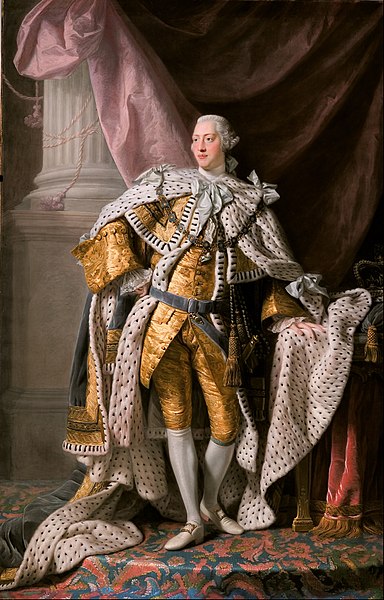
George III (1760-1820)
George III’s reign was marked by significant historical events, including the American Revolution. His struggles with mental illness later in life raised questions about the monarchy’s stability and led to the Regency period under his son.
George IV (1820-1830)
George IV’s reign was characterized by his extravagant lifestyle and architectural projects, including the Royal Pavilion in Brighton. His strained relationship with his wife, Caroline of Brunswick, added to the controversies of his reign.
William IV (1830-1837)
William IV’s reign saw the passage of the Reform Act of 1832, which expanded voting rights and political representation. He supported reform efforts and advocated for social justice.
Victoria (1837-1901)
Queen Victoria‘s lengthy reign witnessed significant changes in society, industry, and politics. Her era, known as the Victorian era, saw the expansion of the British Empire, the Industrial Revolution, and advancements in science and culture.
Edward VII (1901-1910)
Edward VII, known as the “Peacemaker,” played a role in diplomatic relations and improved international relations between European powers. His reign marked a shift towards modernity and a more open monarchy.
George V (1910-1936)
George V’s reign was marked by the tumultuous events of World War I. He and his family rebranded themselves from the German-sounding House of Saxe-Coburg and Gotha to the House of Windsor in response to anti-German sentiments during the war.
Edward VIII (1936)
Edward VIII’s short reign lasted less than a year due to his desire to marry Wallis Simpson, an American divorcee. His abdication led to his younger brother’s ascension to the throne.
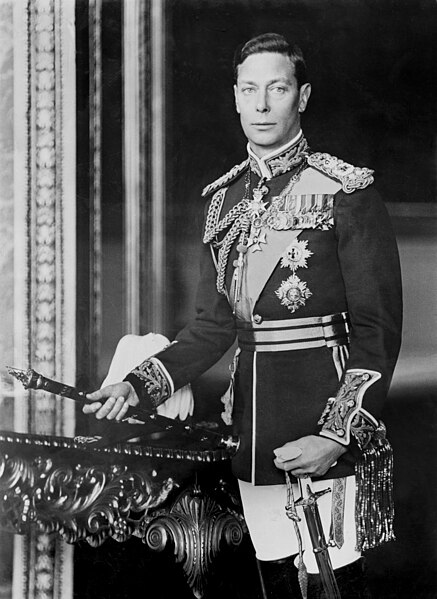
George VI (1936-1952)
George VI’s reign encompassed the challenges of World War II, during which he provided a steadfast presence for the British people. His daughter, Elizabeth, would later become Queen Elizabeth II.
Elizabeth II (1952-2022)
Queen Elizabeth II, oversaw a period of significant change and transition. Her reign included shifts in global politics, the decolonization of the British Empire, and advancements in technology. Queen Elizabeth II’s dedication to public service and the monarchy’s role in modern society defined her legacy.
Charles III (2022-present)
Charles became monarch upon the passing of his mother on September 8, 2022. After being the longest-serving heir apparent and Prince of Wales in British history, he ascended to the throne at the age of 73, making him the eldest person to do so. On May 6, 2023, his coronation took place at Westminster Abbey.
